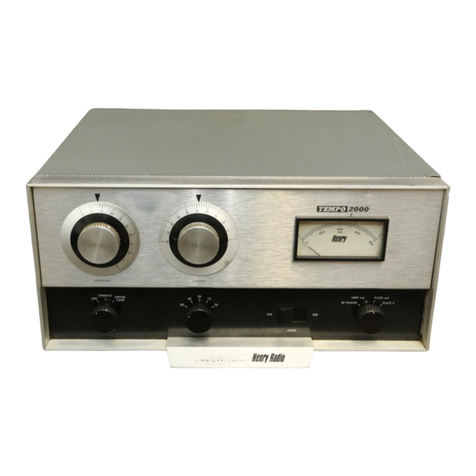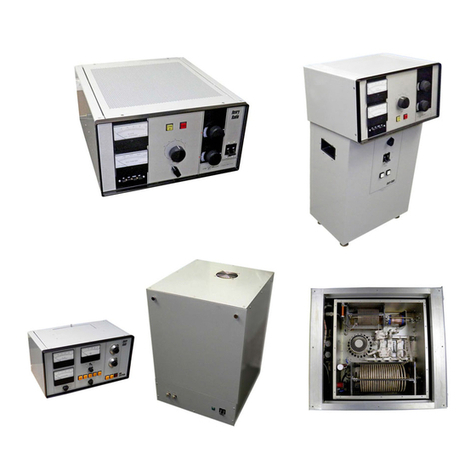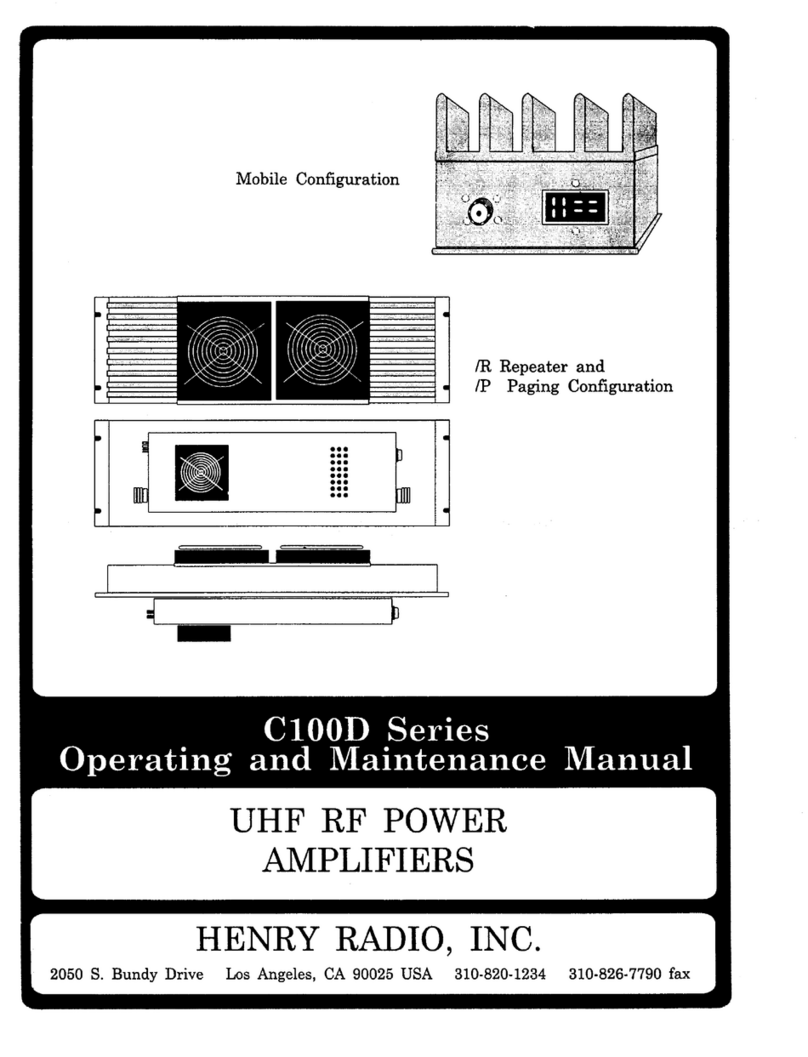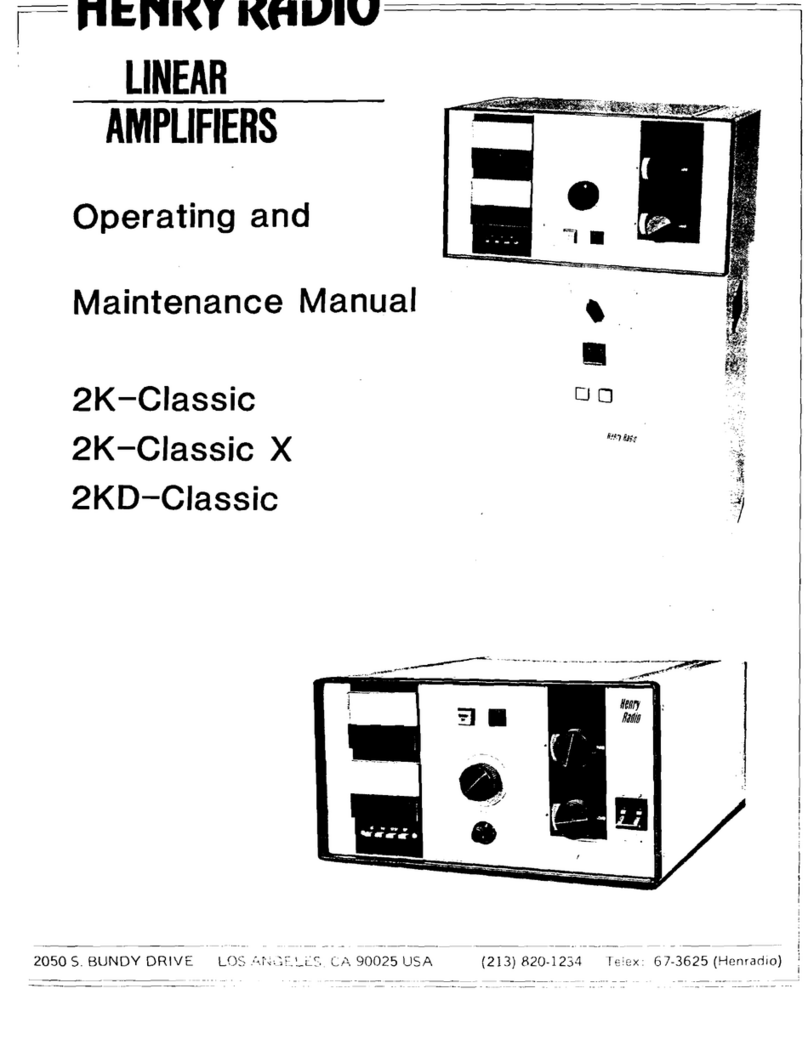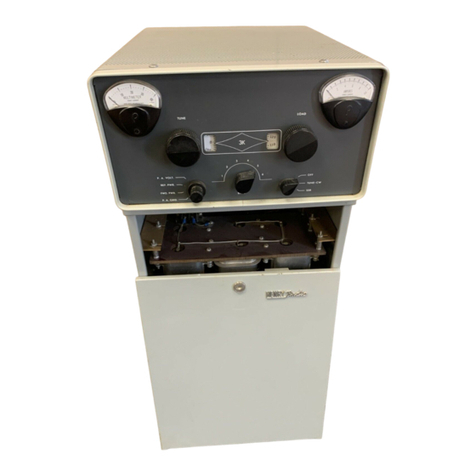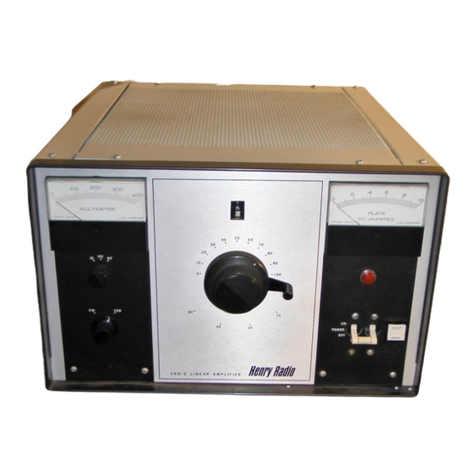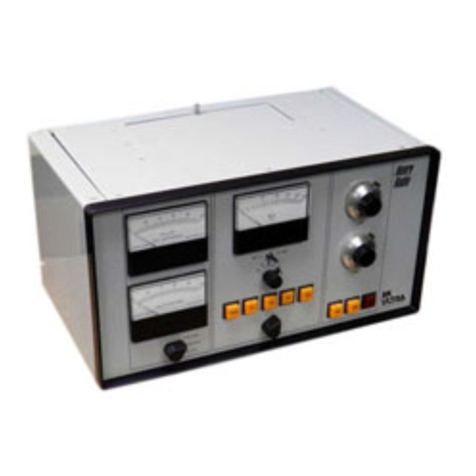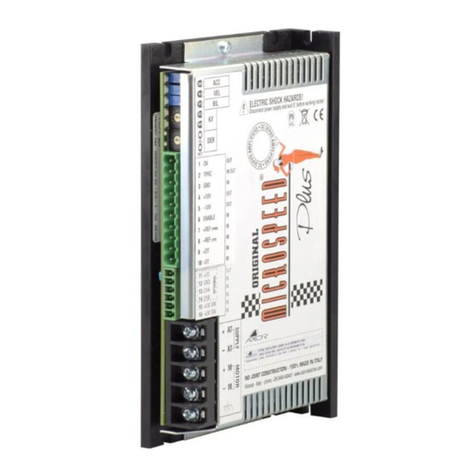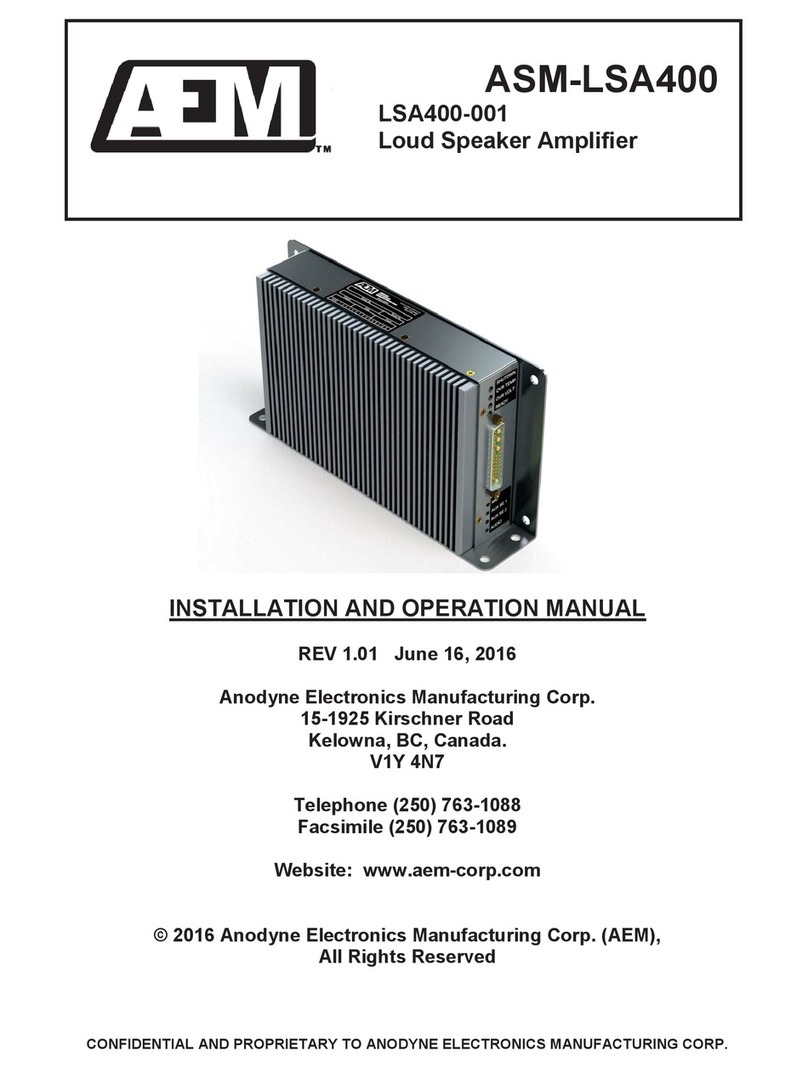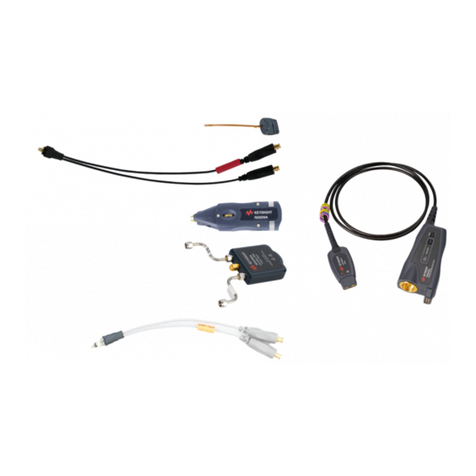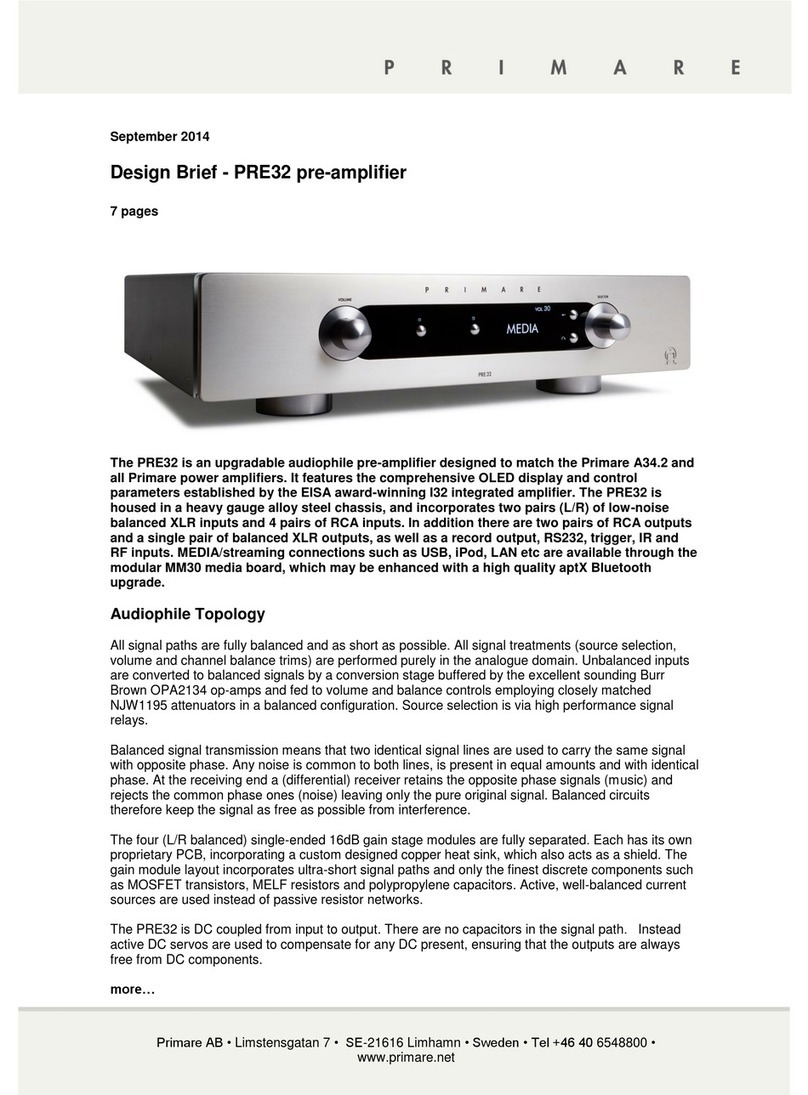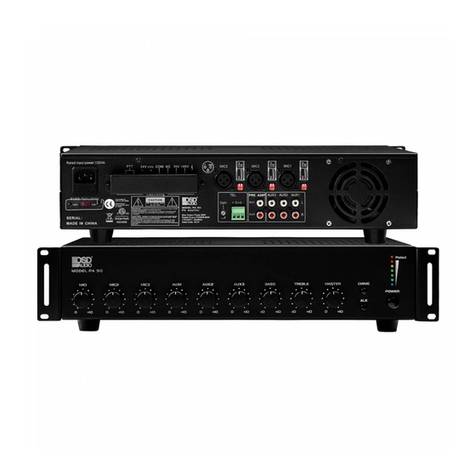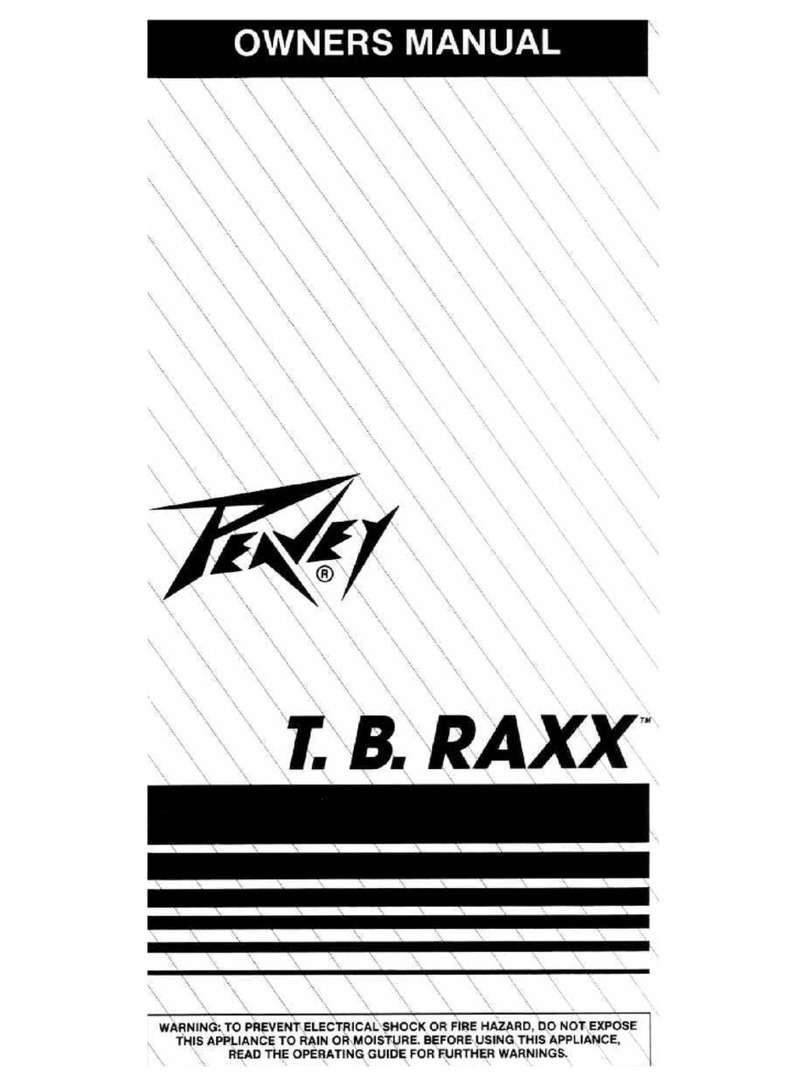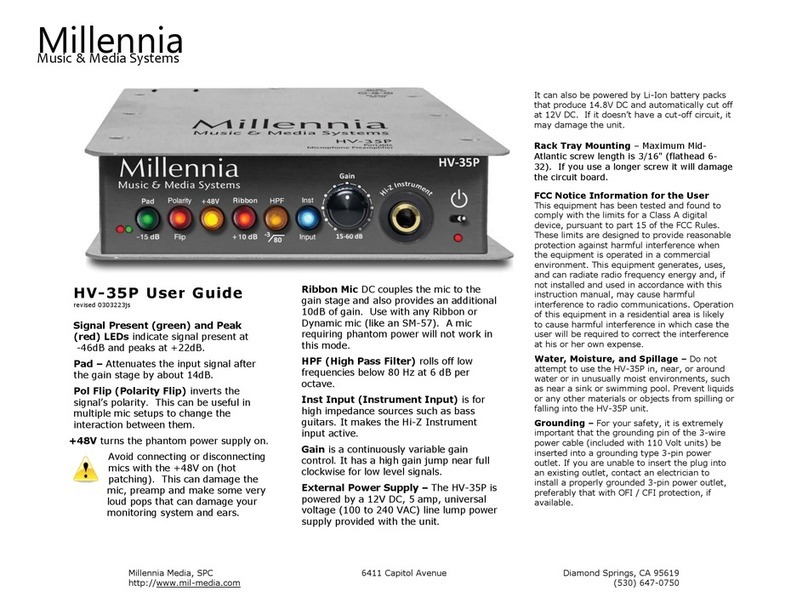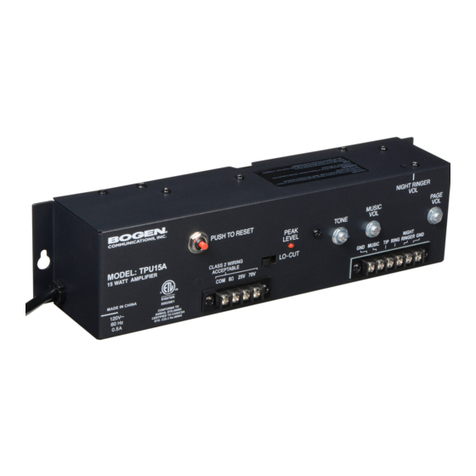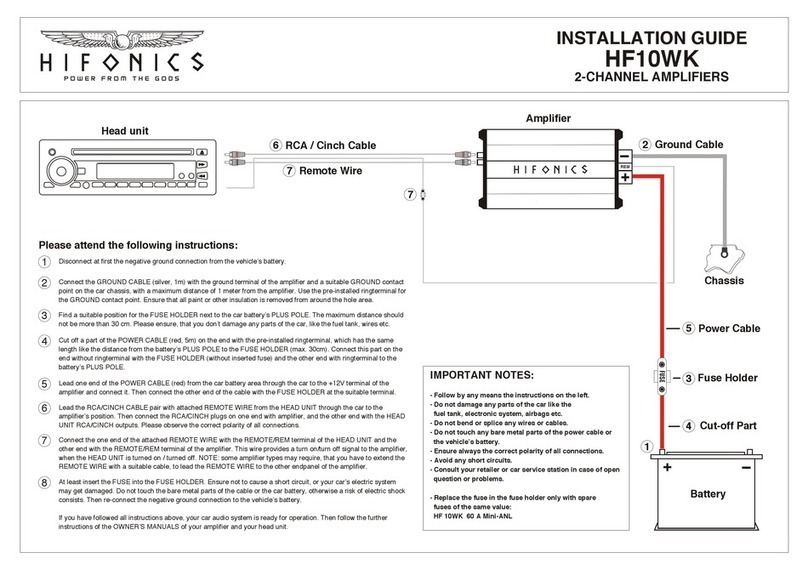
ANTENNA
COAX
-
Use
only
RG-8/U coax
(or
its
equivalent)
to
connect
the
3K-Classic
to
the
antenna.
A PL-259,
UHF
type
coax connector,
is
included in
the
accessory
kit.
Prepare the cable and connector
as
described in Figure 1 below. The PL-259 mates
with
the
coax jack marked
OUTPUT
on
the
rear panel
of
the
amplifier.
CAUTION:
Do
not
operate the
amplifier
without
a load
or
into
a load
with
an
SWR greater than 2:1
(reflected power
1/10
of
forward
power). Measure
the
antenna's
SWR
with
an
SWR
meter, using
only
the
exciter, before operating the
amplifier.
With
the
3K-Classic
turned
off,
the exciter's
output
will
pass
through
the
amplifier
directly
to
the
antenna.
DRIVE
CABLE
-The RG-58/U drive cable connects
to
the
INPUT
connector on the rear panel
of
the
ampli-
fier. This connector
is
the BNC
type
coax connector.
The
other
end
of
the cable
is
terminated
by
a PL-259
plug and should
be
connected
into
the
RF
output
connector
of
the
exciter.
An
adaptor may have
to
be
used
if
the
exciter
does
not
have a matching connector.
ALC
(Automatic
Level
Control)
CA.BLE -Plug
the
grey
ALC
cable
into
the
ALC
OUT
phono
socket on
the
rear panel
of
the
amplifier
and
into
the
ALC
feed-
back connection on the exciter.
If
the exciter does
not
have
provision
for
feedback
of
ALC
voltage
from
an
amplifier,
simply
ignore
the
amplifier's
ALC
socket
and cable.
RELAY
CABLE
-The gray relay
control
cable should
be
plugged
into
the
RCA
phono
socket marked
RELAY
CONTROL
on
the rear panel
of
the
amplifier.
This
cable conducts the keying signal
from
the exciter
to
switch
the
amplifier
to
the transmit
condition
and
must
be
plugged
into
the
socket
or
connector marked
antenna relay
(or
its equivalent) on the exciter. The
exciter
needs
to
supply
only
a shorting relay contact
(closed
to
ground during
transmit)
to
key
the
amplifier.
CAUTION:
Do
not
apply
any voltage
to
the
relay
jack.
The internal relay
is
activated by a self-contained power
supply.
When the 3K-Classic
is
driven
by
an
exciter
without
an
antenna relay socket
It
may
be
necessary
to
examine
the
circuit
diagram
of
the exciter
to
find
an
available
unused relay contact
that
Is
normally
open in
the
receive
condition.
All
current transmitters and trans-
ceivers
currently
manufactured
for
amateur operation
have such a relay contact at a terminal board
or
con-
nector
on
the
rear panel.
ii
iiiiiiiiiiiiiii.
·
~1F
.;i,
..
~
IJIIIII·
SECTION
2.4
200/208
VAC
OPERATION
The 3K-Classic
is
normally
factory
wired
for
220
VAC
unless otherwise ordered. The
following
transformer
~
terminal changes must
be
made
if
the
amplifier
is
to
be
operated at a lower line voltage.
FILAMENT
TRANSFORMER
-The
filament
trans-
former
is
marked EAC-1116 and
is
located on
the
upper deck
of
the
power
su
pply
section.
For
220
VAC
operation
the
primary
should
be
tapped on terminals
"c"
(common)
and
"3".
For
200
VAC
or
208
VAC
operation
the
wire
on
tap
3
should
be
moved
to
tap
number
1.
HIGH
VOLTAGE
TRANSFORMER
-The high volt-
age
transformer
for
the
3K-Classic
is
marked ECA-
1120. The
primary
connections
for
220
VAC
oper-
ation
should be:
Tap 1 - 200
VAC
Tap 2 -
jump
to
tap
4
Tap 3 -
n/c
Tap 4 -
jump
to
tap
2
Tap 5 -
n/c
Tap 6 - 200
VAC
The high voltage transformer
for
the
3K-Classic X
is
marked ECA-1171 and
is
located on the
bottom
level
of
the
power supply section. The
primary
con-
nections
for
220
VAC
operation should be:
Tapl-220VAC
...J
_
Tap 2 -
n/c
Tap
3·220
VAC
The
primary
connections
for
200
VAC
or
208
VAC
operation should be:
Tap 1 •
n/c
Tap
2·200
VAC
Tap
3·200
VAC
Cut
end
of
cable
even.
Remove
vinyl
jacket
I);,
",
except
83
·
ISP
plug
remove
vinyl
jacket
I~".
Bare
Va"
of
center
conductor,
Trim
braided
shield,
Slide
coupling
ring
on
cable,
Tin
exposed
center
conductor
and
braid
,
S
crew
the
plug
sub·asse
mbly
on
ca
b
le.
So
l
der
assembly
to
braid
through
solder
holes
,
making
a
goo
d
bond
between
braid
and
shell.
Solder
conductor
to
conlact
.
Do
not
use
excessive
heat.
For
final
assembly,
screw
coupling
ring
on
plug
sub·assembly.
Figure
1.
PL·259 Installation Instructions.




















